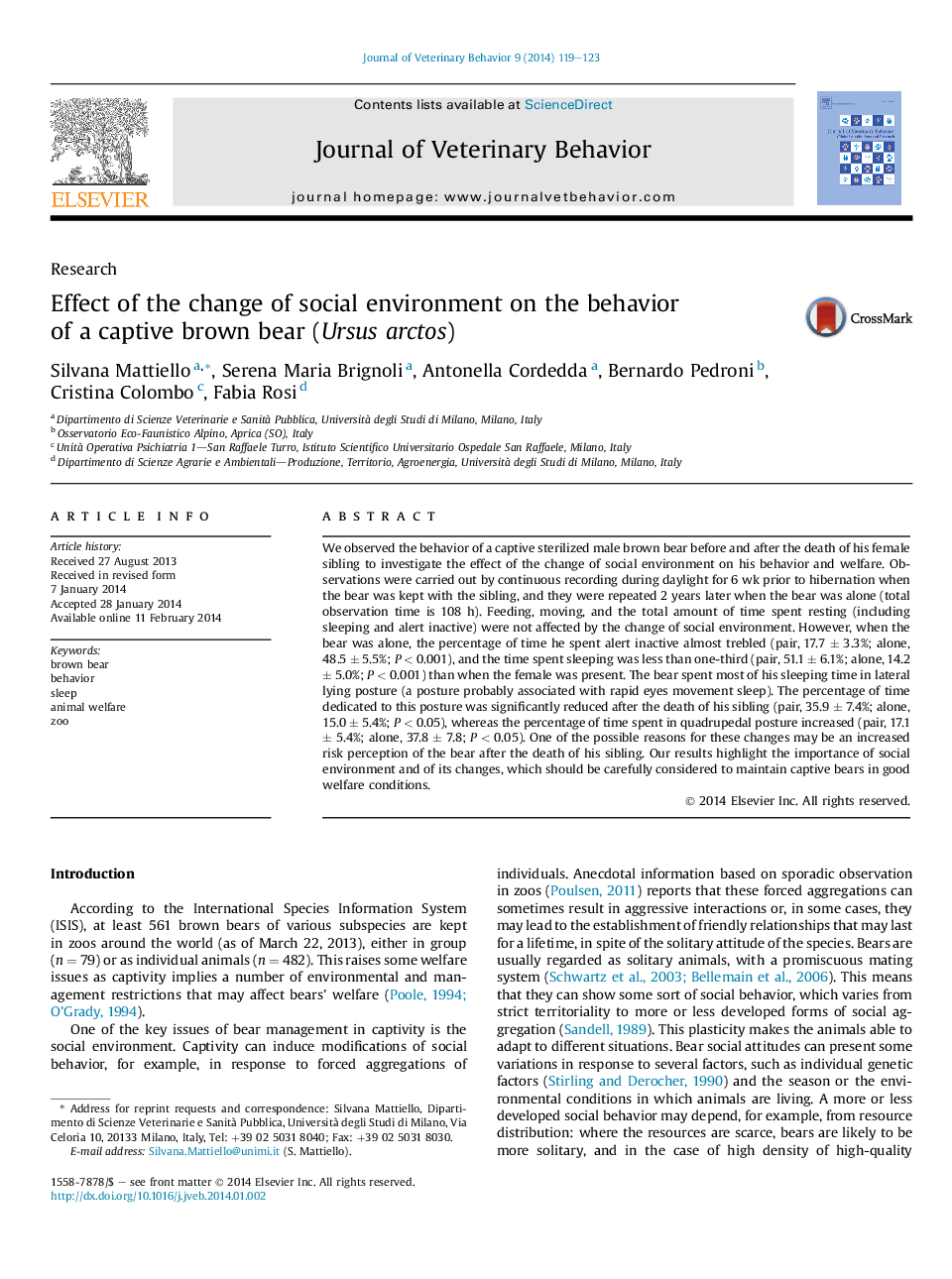| Article ID | Journal | Published Year | Pages | File Type |
|---|---|---|---|---|
| 2399119 | Journal of Veterinary Behavior: Clinical Applications and Research | 2014 | 5 Pages |
We observed the behavior of a captive sterilized male brown bear before and after the death of his female sibling to investigate the effect of the change of social environment on his behavior and welfare. Observations were carried out by continuous recording during daylight for 6 wk prior to hibernation when the bear was kept with the sibling, and they were repeated 2 years later when the bear was alone (total observation time is 108 h). Feeding, moving, and the total amount of time spent resting (including sleeping and alert inactive) were not affected by the change of social environment. However, when the bear was alone, the percentage of time he spent alert inactive almost trebled (pair, 17.7 ± 3.3%; alone, 48.5 ± 5.5%; P < 0.001), and the time spent sleeping was less than one-third (pair, 51.1 ± 6.1%; alone, 14.2 ± 5.0%; P < 0.001) than when the female was present. The bear spent most of his sleeping time in lateral lying posture (a posture probably associated with rapid eyes movement sleep). The percentage of time dedicated to this posture was significantly reduced after the death of his sibling (pair, 35.9 ± 7.4%; alone, 15.0 ± 5.4%; P < 0.05), whereas the percentage of time spent in quadrupedal posture increased (pair, 17.1 ± 5.4%; alone, 37.8 ± 7.8; P < 0.05). One of the possible reasons for these changes may be an increased risk perception of the bear after the death of his sibling. Our results highlight the importance of social environment and of its changes, which should be carefully considered to maintain captive bears in good welfare conditions.
